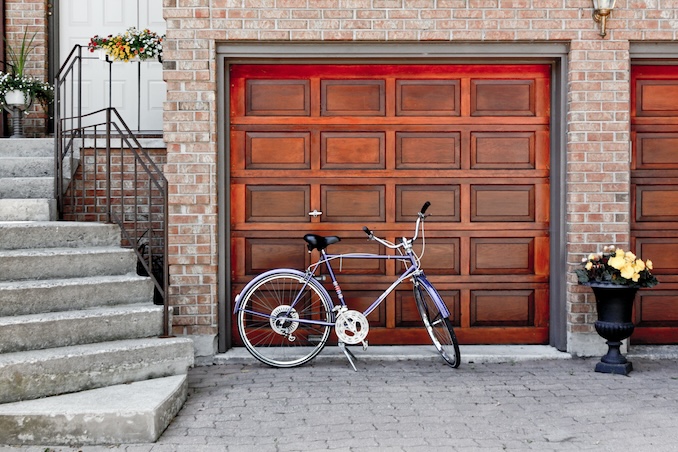Repairing a garage door is a common household task that homeowners often face. One of the most critical components of a garage door system is the bracket, which plays a crucial role in ensuring the smooth operation of the door. Over time, the brackets can wear out or become damaged, leading to operational issues and potential safety hazards. In this detailed guide, we’ll walk you through the process of garage door repair Milton, providing step-by-step instructions to help you handle this task effectively.

Understanding the Garage Door Bracket
Before diving into the repair process, it’s essential to understand the function of the garage door bracket. Brackets are metal components that attach the garage door to the tracks, facilitating the opening and closing mechanism. They bear the weight of the door and ensure that it moves along the tracks smoothly. Over time, brackets can experience wear and tear due to constant use, exposure to the elements, or accidental damage.
Tools and Materials
To begin the repair process, gather the necessary tools and materials. Here’s a list of items you’ll need:
- Adjustable wrench
- Screwdriver set
- C-clamps
- Replacement brackets (if necessary)
- Lubricating oil or silicone spray
- Safety gloves and goggles
Common Garage Door Bracket Issues
| Problem | Possible Cause | Solution |
| Misaligned Bracket | Track misalignment or loose bolts | Adjust track alignment or tighten loose bolts |
| Rust or Corrosion | Exposure to moisture or harsh weather | Remove rust, apply anti-rust coating, or replace bracket |
| Loose or Missing Bolts | Wear and tear, inadequate installation | Tighten bolts or replace with new, high-quality bolts |
| Bent or Damaged Bracket | Accidental impact or excessive force | Straighten or replace the damaged bracket |
| Worn Rollers | Lack of lubrication or prolonged use without maintenance | Lubricate rollers or replace if necessary |
Step-by-Step Guide to Garage Door Bracket Repair
- Safety First: Before you start any garage door repair, ensure your safety. Disconnect the power to the garage door opener to prevent accidental activation. Wear safety gloves and goggles to protect yourself during the repair process.
- Identify the Issue: Inspect the garage door bracket to identify the specific problem. Common issues include misalignment, rust, loose bolts, or visible damage. Understanding the problem will guide your repair efforts.
- Secure the Door: Use C-clamps to secure the garage door in the closed position. This precaution prevents the door from accidentally falling during the repair, ensuring a safer working environment.
- Tighten Loose Bolts: Using an adjustable wrench or a screwdriver, tighten any loose bolts on the bracket. Ensure that all bolts connecting the bracket to the garage door and tracks are secure.
- Align the Tracks: If the bracket misalignment is causing the issue, loosen the bolts connecting the tracks to the brackets. Gently adjust the tracks to align them properly, and then tighten the bolts securely.
- Remove Rust or Corrosion: If rust is present on the bracket, use a wire brush to remove the corrosion. Apply an anti-rust coating or primer to prevent future rusting. In severe cases, consider replacing the bracket with a new, rust-resistant one.
- Replace Damaged Bracket: If the bracket is severely damaged or bent, it may be necessary to replace it. Remove the bolts securing the damaged bracket and replace it with a new one. Ensure the replacement bracket is compatible with your garage door system.
- Inspect Rollers: Examine the rollers for signs of wear or damage. If the rollers are worn, lubricate them using a silicone spray. If the damage is extensive, consider replacing the rollers with new ones.
- Lubricate Moving Parts: Apply lubricating oil or silicone spray to all moving parts, including the brackets and rollers. This helps reduce friction, ensuring smoother door operation and prolonging the life of the components.
- Test the Door: After completing the repair process, carefully remove the C-clamps securing the door. Test the garage door’s opening and closing to ensure that the bracket repair has resolved the issue.
Conclusion
Garage door repair is indeed a manageable task that homeowners can confidently undertake with the right tools and knowledge. Promptly addressing bracket issues ensures the continued smooth operation of your garage door and mitigates potential safety hazards. Additionally, incorporating regular maintenance practices, such as lubrication and inspections, is key to extending the lifespan of your garage door system.
With this comprehensive guide, you’re well-prepared to navigate garage door bracket repairs effectively. However, it’s crucial to acknowledge that every repair situation may not be straightforward, and complications may arise. If at any point you feel uncertain or encounter challenges beyond your expertise, it is advisable to consult a specialist or professional for assistance. Your safety and the optimal functionality of your garage door should always take precedence, and seeking expert advice when needed ensures a secure and reliable resolution. With a combination of DIY skills and professional guidance, you can maintain the longevity and efficiency of your garage door for years to come.

